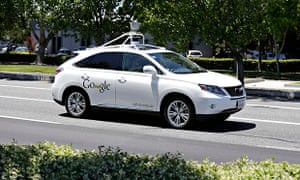With machine learning behind myriad technologies, from online dating to driverless cars, we ask expert Dr Michael Osborne from the University of Oxford to give us the lowdown.
What is machine learning?
Artificial intelligence is really the goal of trying to develop algorithms that can learn and act. Older AI research ran up against this difficulty that people didn’t really know what intelligence was. Machine learning is a much more modern approach to solving the AI problem where we are coming from the bottom up rather than top down, so we are saying, well, let’s define these really crisp, well-defined, sub-problems, like classifying a handwritten digit as being either a one or two, and then use novel techniques within statistics and optimisation to create an algorithm that can improve its performance over time.
What is an algorithm?
An algorithm is a sequence of instructions or rules to complete a task.
Where do we encounter machine learning?
Anywhere and everywhere. The spam filter in your email account will be built around a machine learning algorithm. If you use Google translate , machine learning is trying to learn patterns in data to translate text from one language to another. Dating sites will use machine learning algorithms to try and recommend potential mates for you on the basis of your interests. [With] recommendation systems we are seeing the rise of machine learning all over the internet - if you buy products from Amazon it will recommend things to you on the basis of what you buy but also on what those like you buy.
What are the benefits?
It is not subject to the same biases or heuristics that humans are - for example, a study of judges found that their decisions about whether or not to award parole to prisoners were influenced by whether or not they had just had lunch. Algorithms can [also] scale up much better than humans can. You can fit many more processors than humans into a room.
What are the challenges?
There are technical challenges, obviously, related to designing these crisp problems that are relevant to a large section of industrial and societal needs. [Also] people are concerned that as algorithms get more intelligent they might start to substitute for what humans can do - they might impact on employment. We have this burden to try and make sure that we develop technologies that complement humans rather than replace them.
What about the future?
Health informatics will affect a lot of people’s lives. Everyone is carrying around phones that are recording characteristics of their activities - perhaps we can use that information to try and identify when someone’s about to have a heart attack or a seizure. Again this notion of trying to pick out underlying trends or patterns in data and use it to make predictions. The task of figuring out where a robot is in the world is very much a machine learning problem. Something I think a lot of people are justifiably excited about are autonomous vehicles – that is going to be a huge change in our lives.

View all comments >